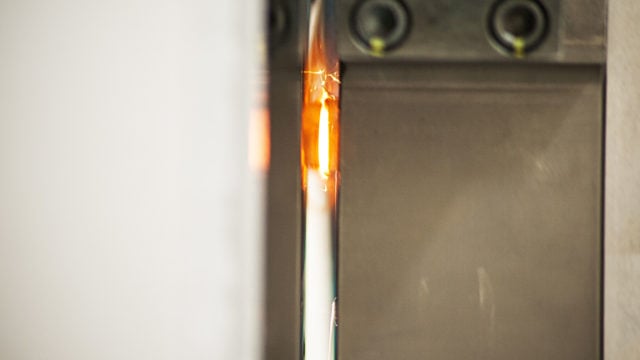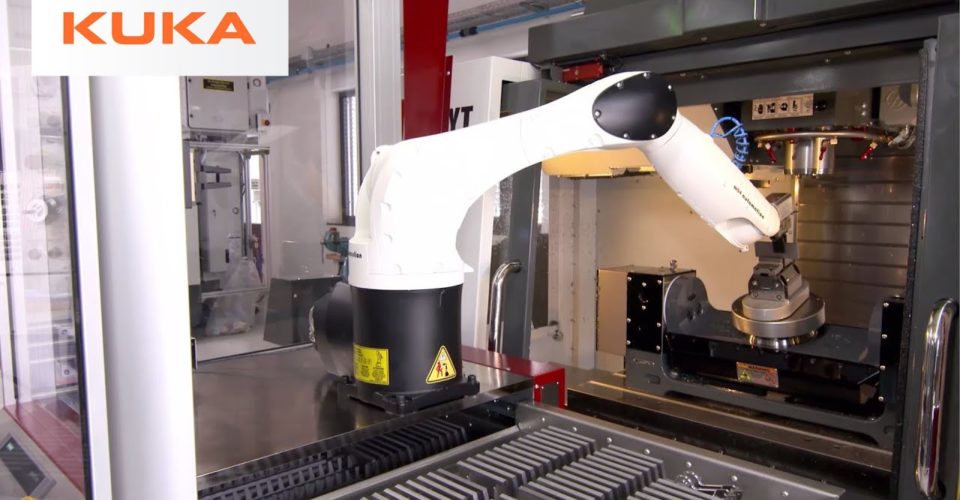
Thompson Friction Welding : Subcontract Linear Friction Welding
What is Linear Friction Welding? Linear friction welding is a solid-state joining process. The technique involves…

The simple definition of machine tending is to assist a machine. Machine tending can be defined as an automated operation of a machine and is now one of the most popular robot applications in industry today. The machine tending process is to load and unload a machine with parts or materials which can be from CNC machines or plastic injection moulding machines where a robot will place a part into a fixture or jig, with the part then being taken out once this process is complete. Factory presses are another example of machine tending where you will see a robot tend to a press, placing product in and taking product out and is also known as ‘press tending’.
Currently, most machine-tending operations are completed by people and we have seen increases from manufacturers to look at automation and robotics to replace these manual tasks. Machines such as CNC machines and plastic injection moulding machines are usually operated by employees, who place the raw materials, blank parts or part machined items into the machine and remove it once the machine has completed its work.
Since operators are becoming harder to source and more expensive because of factors such as the increase in the national minimum wage and Brexit, companies are introducing robotics into their facilities to make up for the fall in labour and are finding robotics as an effective alternative solution. There are many advantages with using robots for machine tending processes but one of the key points to the process is that the application can be repeated continuously, if the robot consistently has an infeed of raw parts and the machine is producing a high standard of product with limited human interaction. Robots have proven they are an ideal solution for minimising cycle time and running processes continuously.
Machine tending or machine automation is a growing area for many businesses in the UK. Dull, repetitive and potentially dangerous tasks are no longer needed to be completed by operators but can instead be achieved with the use of robotics. Some industries have found the use of robotics useful in dirty and often harsh environments such as foundry and forging industries.
Collaborative robots are intended for direct robot interaction within a shared space due to their force and touch sensitivity software. As a result, there are many applications that robots can support with. By assisting with tending and operating machinery, robotics allows employees to be able to complete more ergonomic and less repetitive tasks. Fully automated industrial robots require limited human interaction with the system or machine running autonomously, the robot can simply get on with the task they have been assigned to, working 24/7 without any breaks in the cycle time.
In summary, machine tending robots are an ideal way for businesses to increase production, reduce cycle time and remove employees from hazardous working environments. Machine tending can relieve operators and programmers from the loading and unloading operations which can often be mundane, extremely repetitive and can often cause injury if the product is of substantial weight. Robotic Automation enables Industrial machines to operate without human intervention, running unmanned over a whole shift or through the night, and allowing manufacturers to run ‘lights out’ production which is seen as an extremely attractive proposition. Other benefits include higher machine utilisation, so the manufacturer will see increases in the parts they produce resulting in higher production rates, with operators then freed up and their skills can be better used in other areas of the business.
For more information on Robotic Machine Tending please reach out to our Area Sales Manager and Machine Tending Sector Manager Jonathan Pick by emailing jonathan.pick@kuka.com or by phone T: 0121 505 9970
Be first to see all the updates from MTDCNC
Our newsletters frequency varies dependant on content
All the latest deals from the industry feature on our newsletters